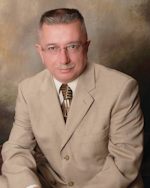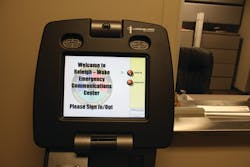The fire service is no stranger to standards, and many of the more commonly known entities such as the National Fire Protection Association (NFPA) and the Insurance Services Organization (ISO) have standards that also apply directly to emergency communications. However, there is an alphabet soup of additional agencies that promulgate regulations having a direct impact on this specific aspect of operations. This column details who these agencies are, what these standards cover and why fire departments both large and small should be concerned about meeting them.
Perhaps the best way to review these is by alphabetical order. We’ll start with the American National Standards Institute (ANSI) and the Association of Public-safety Communications Officials International (APCO). Our focus here will be on those documents that bear the seal of both. Among these is the Automated Secure Alarm Protocol (ASAP) by which alarm companies can directly communicate with computer-aided dispatch (CAD) systems. This eliminates the need for a call between the central station and the 9-1-1 center, and provides for pre-verification of the address. The latter is extremely critical as it eliminates precious time wasted struggling with partial or incorrect addresses.
Personnel qualifications
Also of interest are ANSI and APCO standards that deal with personnel. These include Core Competencies and Minimum Training Standards for Public Safety Communications Training Coordinator, Core Competencies and Minimum Training Standards for Public Safety Communications Supervisor, Core Competencies for Public Safety Communications Manager/Director and Minimum Training Standards for Public Safety Telecommunicators.
Documents also cover: Public Safety Communications Common Incident Types for Data Exchange, Wireless 9-1-1 Deployment and Management Effective Practices Guide, Standard Channel Nomenclature for the Public Safety Interoperability Channels Public Safety Answering Point (PSAP) Service Capability Criteria Rating Scale Standard for Public Safety Telecommunicators when Responding to Calls of Missing, Abducted and Sexually Exploited Children. Although the latter may be more applicable for PSAPs that service law enforcement, it is mentioned here since it is worthwhile training. It can not be assumed that such reports would never reach a fire-only dispatch center.
Next on the list comes the Commission of Accreditation for Law Enforcement Agencies (CALEA). While it may sound strange to be including what would appear to be a police-oriented body, CALEA offers an accreditation process for communications centers. Interestingly, the Shreveport, LA, Fire Communications Center opted for this route. According to Willis Carter, then deputy chief of the department and chief of communications, “Successfully achieving our first CALEA accreditation Award in 2003 was, without a doubt, one of my agency’s proudest accomplishments. Meeting the very demanding professional standards’ compliance requirements affirms the agency’s commitment to top-quality public safety services.”
Mandated standards
The Federal Communications Commission (FCC) by name alone would be an obvious choice for inclusion in our review of regulatory agencies. The FCC is of particular import in that – unlike others discussed here – its applicable standards are not voluntary. A wide range of subjects covered impact the fire service, including type-accepted equipment, licensing requirements and 9-1-1. Failure to comply in some cases can lead to fines, loss of frequencies or other penalties.
The bulk of FCC regulations applying to public safety radio services are included in The Code of Federal Regulations (CFR) Title 47 Chapter 90. This is more often referred to as the Land Mobile Radio Regulations, or more simply Chapter 90. Recent examples of FCC actions having impact on the fire service include the reassignment of frequencies from a congressional action that let work begin on FirstNet (the national interoperable network for first responders) and the reduction of bandwidth in radio channels (narrow-banding.) For federal agencies, some of the duties generally assigned to the FCC are handled by the National Telecommunications and Information Administration (NTIA.) The Federal Aviation Administration (FAA) and local zoning laws can conditionally speak to tower height and setbacks. As is the case with any government function, readers outside the United States will have sovereign agencies that perform similar tasks.
Up next is the Federal Emergency Management Agency (FEMA). Although often thought of as a response and preparedness mechanism, FEMA does speak to preparedness in terms of emergency facility design and offers courses in Emergency Operations Center Operations. This is a good place to also mention the Department of Defense and the General Services Administration (GSA.) The Department of Defense UFC-4 standard for building construction is commonly applied to non-DOD structures, while FEMA’s Risk Management Series: 426 Reference Manual to Mitigate Potential Terrorist Attacks Against Buildings and FEMA 452 Risk Assessment: A How to Guide To Mitigate Potential Terrorist Threats are often also used.
Insurance ratings
ISO is well known to fire administrators due to its Fire Suppression Rating Schedule, which classifies fire departments and ultimately helps to establish insurance ratings within a community. Fully 10% of this rating is based on emergency communications, with points being given for Enhanced 9-1-1 (E 9-1-1), CAD, staffing/processing times, training, certification and facilities. ISO does refer to the NFPA 1221 standard liberally in this schedule, and this will be discussed in greater detail further on. The International Municipal Signal Association (IMSA) has had a long relationship with the fire service and offers two certification programs of interest: Fire Alarm and Public Safety Telecommunicator.
The National Emergency Number Association (NENA) is the source of more than 100 standards, divided between operational and technical categories, and into seven functional areas: Accessibility, Agency Systems, Core Services, Interconnection and Security, Next-Generation 9-1-1 Transition Planning, PSAP Operations and Public Education and Training.
Among the more frequently referenced NENA standards are 04-001 E 9-1-1 PSAP Equipment, 08-002 Functional Interface Standards for NG 9-1-1 and 08-003 Detailed Functional and Interface Specifications. The latter two refer to the so-called “i3” architecture involved in creating Next-Generation 9-1-1. NENA also produces a 9-1-1 Master Glossary, which, while not a standard, is a handy reference tool for anyone dealing with the often-confusing array of communications terms.
The NFPA promulgates a number of standards and more than a dozen of them have direct applications to communications or communications centers. The bible on PSAP function and design is NFPA 1221: Standard for the Installation, Maintenance and Use of Emergency Services Communications Systems. The title says it all. The contents of NFPA 1061: Standard for Professional Qualifications for Public Safety Telecommunicators are also self-explanatory. Additionally, documents covering electrical installation, fire extinguishing systems and grounding all can come to bear. The NFPA, like most agencies, periodically updates its standards, so it is wise to keep abreast of these changes.
Benny Nichols, retired fire chief from the City of Fayetteville, NC, and a current member of that state’s 9-1-1 Board, said the use of NFPA 1221 and ISO ratings have a significant impact not only on fire departments, but the communities they serve.
“With a full 10 points being assigned to communications, any deficiencies in this area can help lead to a degraded ISO rating, which in turn leads to higher homeowners’ and renters’ insurance rates,” Nichols said. “This becomes an unintended tax, of sorts, to these citizens.”
More codes & rules
It has not been the intent of this column to provide a complete list or description of every conceivable standard or agency that could affect all aspects of fire service communications. Rather, an attempt has been made to make readers aware of the vast scope of agencies (the “who”) that provide regulation or guidance, as well as the breadth of subject matter (the “what”) that these standards and guidelines encompass.
Further, it must be noted that facilities that house communications equipment will require compliance with whatever national, state or local building codes are used in their jurisdiction. The Americans with Disabilities Act (ADA) will apply across the board due to equal access to the hearing and speech impaired, while Federal Bureau of Investigation (FBI) dictums regarding criminal information access will apply only to those facilities having such capability. Mention has also not been made of most manufacturers’ requirements regarding proper installation and maintenance of operating environments for their equipment, although a good example here is the Motorola Standards and Guidelines for Communications Sites, which contains information on a variety of subjects including the company’s R56 standard, as well as a more complete list of both U.S. standards and international regulatory bodies.
When it comes to the operation and staffing of dispatch centers, the water can become even more clouded. While the FCC promulgates nationwide regulation on a broad range of topics, the support and enactment of 9-1-1 typically becomes a state and local matter. Funding mechanisms, such as the collection of service fees from telephone users, vary, as do requirements for training (if any) for telecommunicators. And while there are staffing formulae available from both APCO and NENA, and while NENA has long advocated for 90% of emergency calls to be answered in 10 seconds or less, compliance with these is likely voluntary. A Google search on “understaffed 911” resulted in a response of “about 971,000 results.”
Interoperability
The questions of “why” particular standards exist, “why” fire personnel should be aware of these standards and “why” compliance is a good idea have many answers. Perhaps one of the easiest to grasp is interoperability. Having radios that cannot talk to each other limits the ability of different agencies to work together.
Consider interoperability akin to the development of the National Standard hose thread. You can connect to your mutual aid department directly or by use of an adapter, but you must be able to connect. Similarly, your radios can have common channels or you can use some type of patching mechanism. The real point is the ability to work together. Those involved in inspection processes can see the usefulness of standards and regulatory bodies in their everyday work. Many of these same standards and organizations are also involved when it comes to communications facilities. Often, standards are developed as a result of an incident or series of incidents or in response to changes in technology. Either way, it is beneficial to stay ahead of the curve when it comes to safety.
Perhaps the most compelling reason why those in the fire service should be aware of communications standards is that communications play such a valuable role not only in daily operations, but most importantly, in firefighter safety. Improperly designed, installed, maintained and operated radio, data, telephone and signaling systems endanger firefighters and the public alike. Knowledge gained about any and all aspects of this subject helps to significantly reduce this threat.
BARRY FUREY, a Firehouse® contributing editor, is director of the Raleigh-Wake Emergency Communications Center in North Carolina. During his 35-year public safety career, he has managed 911 centers and served as a volunteer fire officer in three other states. In 2005, Furey received a life membership in the Association of Public-safety Communications Officials (APCO) International for his continued work in emergency communications.
HELPFUL LINKS FOR FIRE DEPARTMENTS
ASSOCIATION OF PUBLIC-SAFETY COMMUNICATIONS OFFICIALS, INTERNATIONAL (APCO)
http://www.apco911.org/standards/apco-standards-for-download.html
COMMISSION OF ACCREDITATION FOR LAW ENFORCEMENT AGENCIES (CALEA)
http://www.calea.org/content/public-safety-communications-accreditation
FEDERAL AVIATION ADMINISTRATION TOWER REGULATIONS
http://wiki.radioreference.com/index.php/FCC_and_FAA_Tower_Marking_and_Lighting_Requirements
FEDERAL COMMUNICATIONS COMMISSION
http://www.fcc.gov/public-safety
INSURANCE SERVICES ORGANIZATION (ISO)
http://www.isomitigation.com/fsrs/documents/FSRS-view-and-print-version-watermark-secured.pdf
MOTOROLA STANDARDS AND GUIDELINES FOR COMMUNICATIONS SITES/MOTOROLA R56
http://www.radioandtrunking.com/downloads/motorola/R56_2005_manual.pdf
NATIONAL EMERGENCY NUMBER ASSOCIATION (NENA)
http://www.nena.org/?page=Standards
NATIONAL FIRE PROTECTION ASSOCIATION (NFPA)

Barry Furey
BARRY FUREY, who is a Firehouse Contributing Editor, provides consulting and training services in emergency communications. He is the former director of the Raleigh-Wake Emergency Communications Center in North Carolina. During his 50-year public safety career, he has managed 9-1-1 centers and served as a volunteer fire officer in three other states. In 2005, Furey received a life membership in the Association of Public-Safety Communications Officials (APCO) International for his continued work in emergency communications. Furey was inducted into the Firehouse Hall of Fame in 2017.






